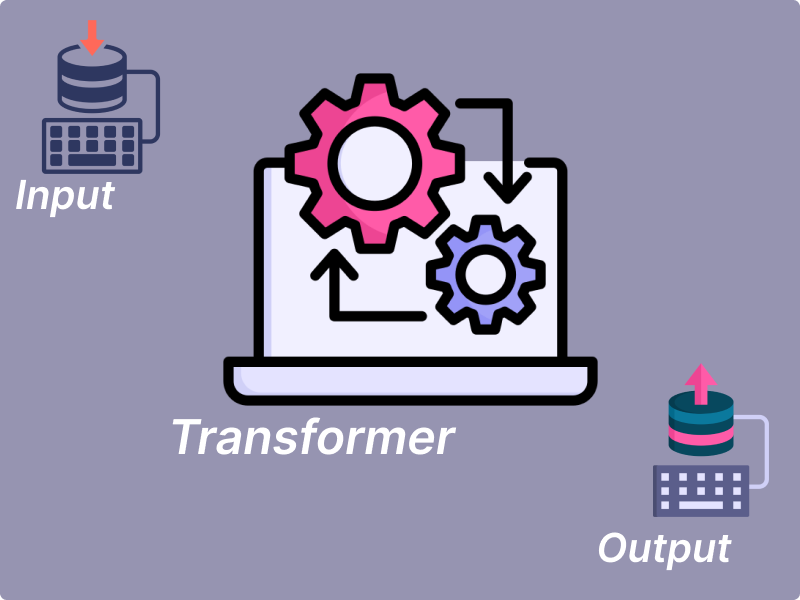A Guide to the Most Popular Models in AI
In recent years, transformer models have revolutionized machine learning and natural language processing (NLP) fields. From improving search engines and chatbots to enhancing medical diagnostics and even creating human-like text, transformers have set new benchmarks for AI performance. But with so many variations such as BERT, GPT, RoBERTa, and more, it can be challenging to keep track of their differences and understand how each one is optimized for specific tasks.
In this article, we'll explore the most influential transformer models, breaking down their key features and innovations. Whether you're an AI enthusiast, developer, or researcher, this guide will give you a clearer understanding of how these models are transforming the landscape of machine learning. Let's dive in!
Unlocking the Power of Transformers
Transformer models have undergone significant advancements since their inception in the influential paper titled "Attention is All You Need" by A. Vaswani et al. Let’s check out these notable types of transformer models:
- Vanilla Transformer:
- This was the original Transformer model introduced by Vaswani et al. It uses self-attention mechanisms to process input sequences and consists of an encoder and a decoder.
- Bidirectional Encoder Representations from Transformers (BERT):
- Developed by Google, BERT is designed to understand the context of a word in search queries by analyzing the words that precede and follow it.
- Generative Pre-trained Transformer (GPT):
- Created by OpenAI, GPT models (GPT, GPT-2, GPT-3, GPT-4) are designed primarily for text generation. They use a transformer decoder and are pre-trained on a large corpus of text data.
- Robustly Optimized BERT Pretraining Approach (RoBERTa):
- An optimized version of BERT by Facebook AI, RoBERTa modifies key hyperparameters and training duration to enhance performance.
- XLNet:
- A generalized autoregressive pretraining method developed by Google/CMU, XLNet incorporates ideas from BERT and Transformer-XL, combining autoregressive and autoencoding approaches.
- Transformer-XL:
- An extension of the vanilla transformer that introduces a segment-level recurrence mechanism, allowing the model to capture longer-term dependencies more effectively.
- Text-to-Text Transfer Transformer (T5):
- Developed by Google Research, T5 redefines all-natural language processing (NLP) tasks as text-to-text problems, allowing the model to undergo fine-tuning across a diverse spectrum of tasks using a unified objective.
- A Lite BERT (ALBERT):
- A lighter and more efficient version of BERT by Google Research, ALBERT reduces memory consumption and increases training speed through parameter reduction techniques.
- DistilBERT:
- Hugging Face developed a smaller, faster, and lighter version of BERT, which retains most of BERT's performance while being more efficient.
- Enhanced Representation through Knowledge Integration (ERNIE):
- Developed by Baidu, ERNIE incorporates external knowledge graphs during pretraining to improve performance on various NLP tasks.
- Longformer:
- Designed by the Allen Institute for AI, Longformer is optimized for processing long documents by using a combination of local and global attention mechanisms.
- Reformer:
- Created by Google Research, Reformer introduces efficient attention mechanisms and reversible layers to handle long sequences with reduced computational complexity.
- BigBird:
- Another model from Google Research, BigBird combines ideas from Transformers and sparse attention mechanisms to handle longer sequences effectively.
- Pegasus:
- Developed by Google, Pegasus is specifically designed for abstractive text summarization, using a unique pretraining objective that masks and predicts entire sentences.
- Switch Transformer:
- Introduced by Google Research, Switch Transformer scales to trillion-parameter models by using a mixture-of-experts approach, activating different subsets of parameters for different inputs.

Conclusion
In this article get introduced to some of the notable transformer models that have been developed to address various challenges in natural language processing and machine learning. Each model brings unique innovations and improvements over its predecessors.
In subsequent articles, we will delve deeper into specific transformers and how to build, customize, and deploy custom transformers for different applications.




